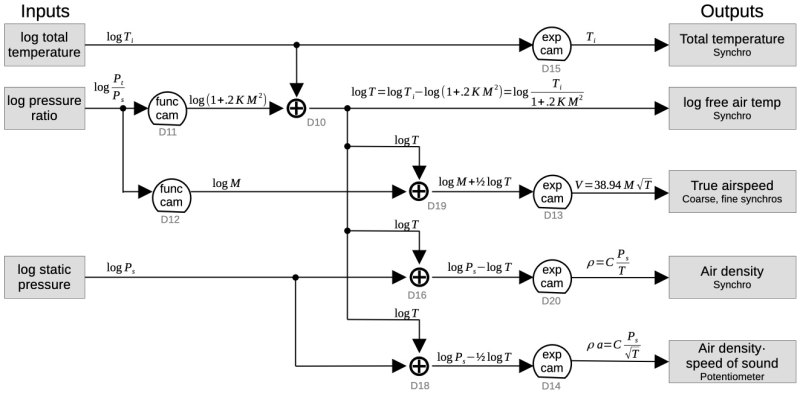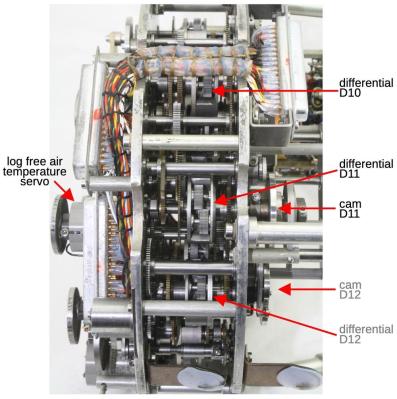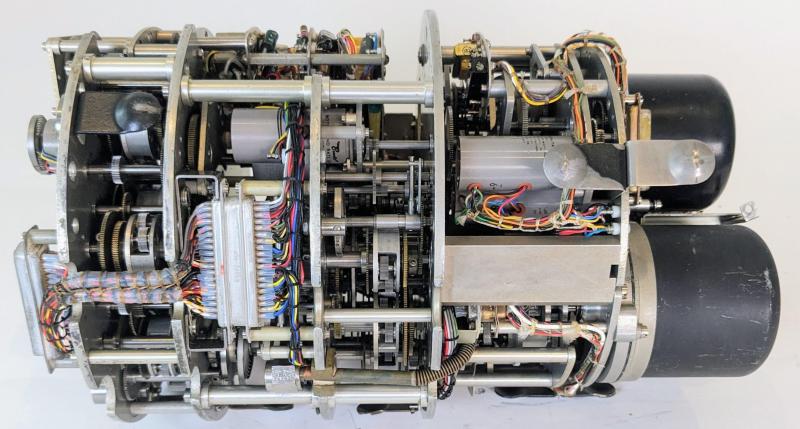Before the era of digital electronic computers, mechanical analog computers were found everywhere. From the relative simplicity of bomb sights to the complexity of fire control computers on 1940s battleships, all the way to 1950s fighter planes, these mechanical wonders enabled feats which were considered otherwise impossible at the time.
One such system that [Ken Shirriff] looked at a while ago is the Bendix Central Air Data Computer. As the name suggests, it is a computer system that processes air data. To be precise, it’s the mechanism found in airplanes that uses external sensor inputs to calculate parameters like altitude, vertical speed, Mach number and air speed.

This particular electrical-mechanical avionics package by Bendix is a prime example of these systems. The basic concept is rather straightforward: sensors like pitot tubes provide the raw input to the computer, which runs a number of equations on this data through the use of intricate differential gears:

In a sense this is not dissimilar to the way a digital computer is programmed using software instructions. Instead of register values being set and memory addresses written, carefully crafted gears and cams move to transfer exactly the right number of rotations on the output, or whatever output may be required to implement the desired equation. Many details can also be gleaned from the (now expired) 1954 patent.
Since the avionics will never be changed for the life of the airplane (barring upgrades), having such functionality ‘hard-coded’ can be seen as a feature, as it’s likely to shake off EMPs and general EMI. In an older Hacker News thread this air data computer was discussed, with some references to similar systems and a link to a 1953 US Navy training video for an analog firing solution computer.
Despite the general robustness of these analog electrical-mechanical computers, they were phased out by the late 1960s for all-digital versions. Offering faster calculations in a much smaller package was an attractive feature that mechanical computers just couldn’t compete with, especially not in the field of avionics.















“Since the avionics will never be changed for the life of the airplane (barring upgrades), having such functionality ‘hard-coded’ can be seen as a feature, as it’s likely to shake off EMPs and general EMI.”
Yeah, that’s why the Soviets had miniature electron tubes in their later jets, while the US were crazy about things being solid-state. Guess who was wiser. 🙄😂
Maybe with MEMS and microfluidics analog could have a renaissance.
Or just bring back tubes.
https://en.wikipedia.org/wiki/Nanoscale_vacuum-channel_transistor
1969 I saw a gear that had angle as the input and sin of the angle as an output.
As a newly minted EE, I was blown away at the simplicity.
I then spent my career designing with micros to replace all the mechanical devices!!
…in the late ’60s, headed a team assigned the task of investigating the feasibility of “upgrading” the C-141’s CADC.
The recommendation?–leave it alone; one can’t do any better, from <any standpoint, than this analog computer.
And one still can’t, to this day.
“We must beware of needless innovation, especially when guided by
logic.” — Winston Churchill
Every old car has least one pneumatic analog computer.
The carb.
You tune it by changing jets.
The carbs on my motorcycle also have a tapering needle that sits above the main jet, in what’s called the “emulsifier tube” where air is introduced to enhance the breakup of the fuel into smaller droplets. The needle has 5 grooves at the top. Into one of these you place a tiny circlip. The result is that the needle is raised or lowered in the tube. This results in a smaller or larger effective cross-section, which leans or enriches the final mix. It’s kind of fine-tuning to account for atmospheric pressure, i.e. altitude. That’s some sophisticated analog tuning. And you judge its effectiveness, and the need to adjust, by looking at the colour of deposits in the exhaust pipe, and the colour and condition of the spark plugs. Too sooty, and you lower the needle to make it a bit leaner, and vice versa.
Sounds exactly like the carburetter (as the British are wont to say) on my BSA 500cc Star ‘banger’ (I’m not sure, but believe it was an Amal carb; but that was years, and many memories, ago).
I could never understand why this design was never used on ‘regular automobiles’; it was the epitome of simplicity, worked flawlessly, and presented the least possible restriction to airflow into the cylinder (it basically was a straight pipe). I do remember seeing a bank (6? 8? 12?) of these used on a Formula 1 or Indy race car , and saying “YESSSS!!”—I felt totally vindicated, but never found a way to “monetize” my crystal-ball-gazing talents.
[Perhaps Amal carbs would work only on engines which had to be “Kicked through”. I can’t imagine that kick-starting a present-day 4-cylinder ICE would be any harder than starting my BSA Star]
Here’s some more to get the noggin a joggin
https://hackaday.com/2021/06/16/the-other-first-computer-konrad-zuse-and-the-z3/#more-480960
https://electrickery.nl/mechanics/zuseGates/
The Chess Computer From 1912
https://hackaday.com/2014/09/16/retrotechtacular-the-curta-mechanical-calculator/
My favorite is the 1913 Duo Art player piano. Though digital in nature with notes, the loudness of left and right hand ranges of notes were encoded with two 4 bit D to A converters with variable servo controlled output. Thus 16 levels of dynamics bit weighted 1-2-4-8. I’ve rebuilt a couple. Another competing player had 3 bit for only 7 volume levels but had slow ramp up or down and fast ramp. So analogue and digital modes of operation at the same time. Two rates of Attack and Decay in synth terms added to the 7 levels.